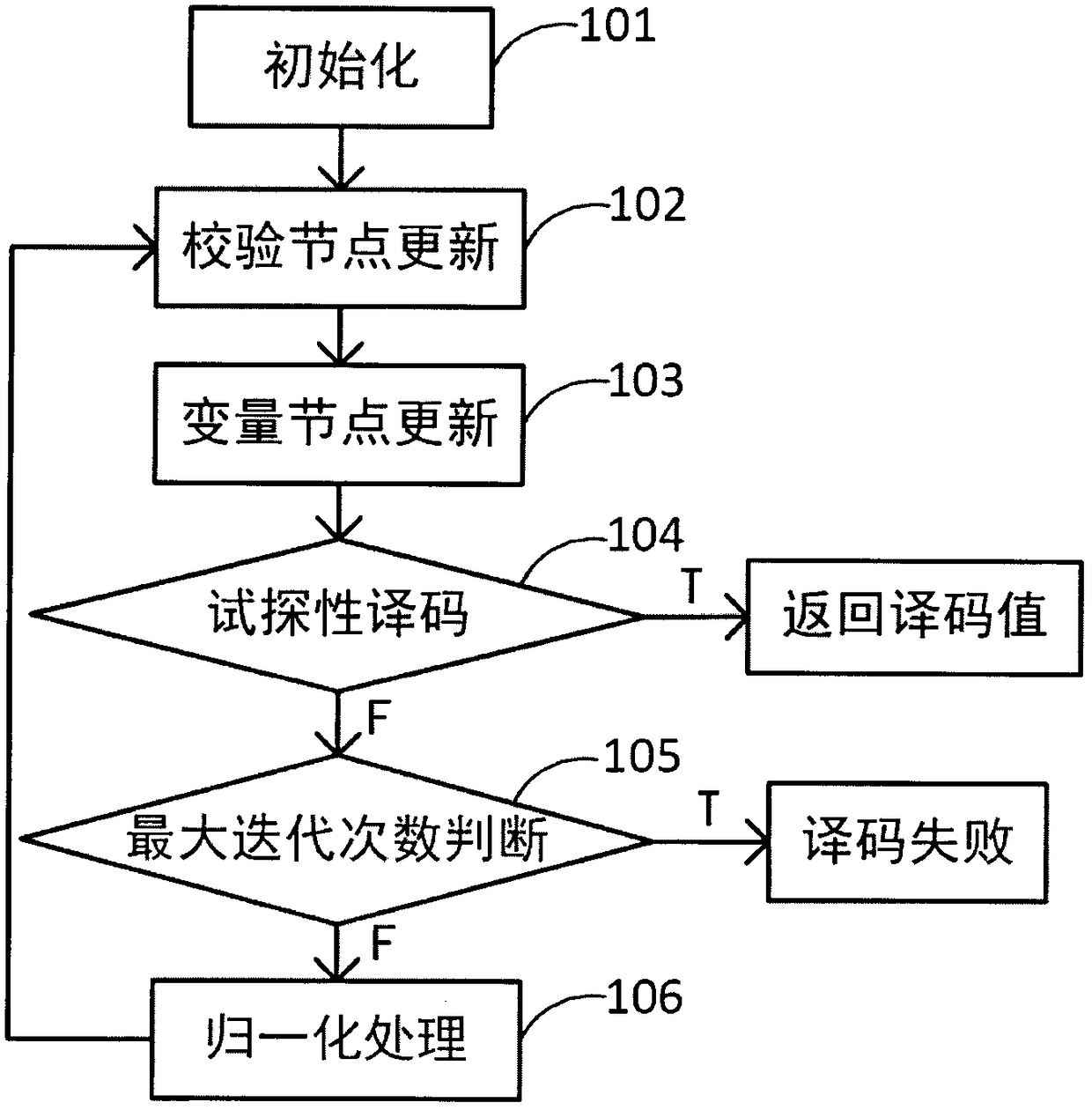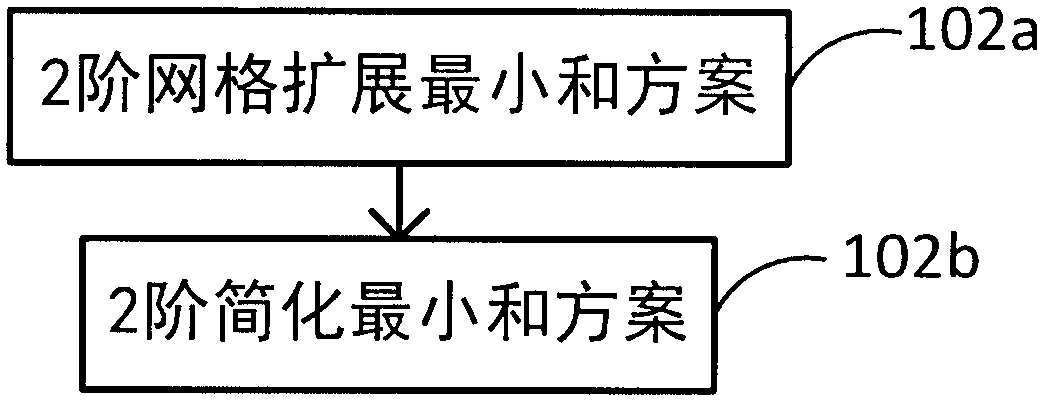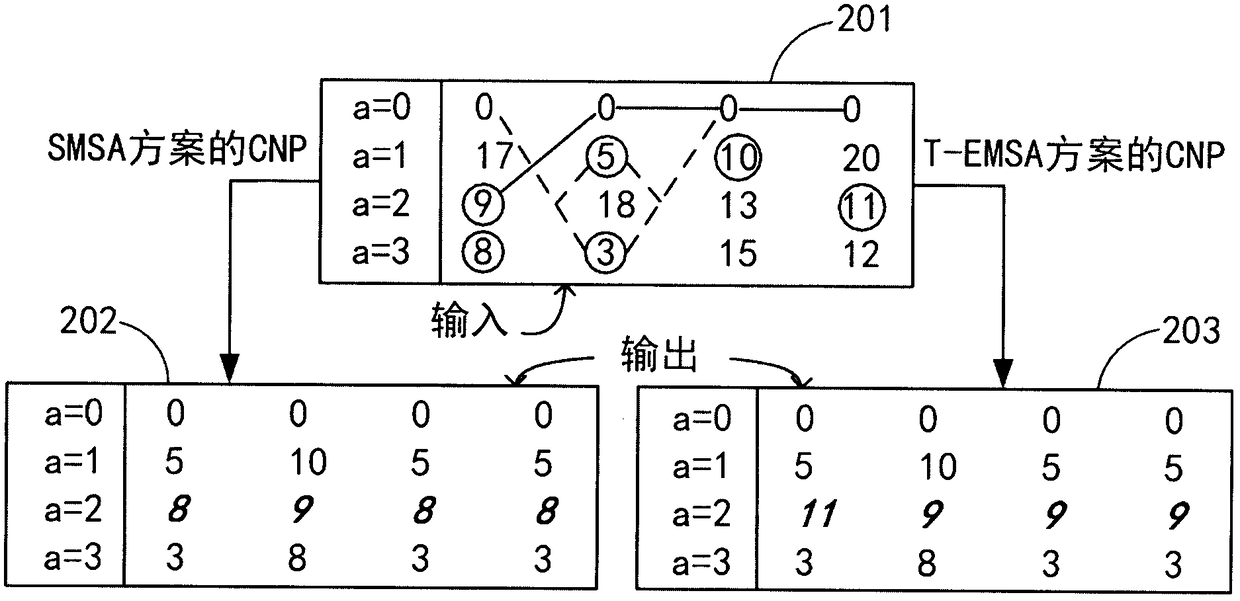NB-LDPC code decoding method with high performance and low complexity
A low-complexity, high-performance technology, applied in the field of communication, can solve the problems of reduced complexity, affecting decoding throughput, too many serial calculations, etc., to achieve the effect of reducing computational complexity and improving the competitiveness of practical applications
- Summary
- Abstract
- Description
- Claims
- Application Information
AI Technical Summary
Problems solved by technology
Method used
Image
Examples
Embodiment 1
[0040]The embodiment of the present invention proposes a decoding method with constant or better decoding performance but greatly reduced complexity. The implementation of this method is divided into two steps: 1) Integrating the advantages of SMSA and T-EMSA to obtain IT - The MSA method, which has the characteristics of high decoding performance and low complexity; 2) Applying the DTBS method to IT-MSA further reduces the computational complexity under the premise of ensuring performance. Because in the NB-LDPC decoding method, the most complicated part is the update of the check node, in this embodiment, the process of updating the check node is mainly described. For details, see image 3 and Figure 4 , where a check node is selected as an example, the degree (row weight dc) of the check node is 4, and the Galois domain value is 4.
[0041] image 3 It is a block diagram of the results of the verification node processing (CNP) using SMSA and T-EMSA in the embodiment of t...
Embodiment 2
[0044] In the embodiment of the present invention, the proposed decoding method is simulated and verified, and compared with multiple methods. For the (256, 203) NB-LDPC code, its Galois field order is 256, the row weight (the degree of the check node) of the parity check matrix is 16, and the column weight (the degree of the variable node) is 4, using After BPSK modulation passes through the AWGN channel, the signal at the receiving end is the logarithmic likelihood ratio. EMSA, SMSA (partial 4), TIT-MSA (the final solution of the present invention) and IT-MSA (the first step result of the present invention) are simulated and compared, and its simulation curves can be found in Figure 5 . Since the maximum number of deviations of T-EMSA in the literature is only 3 (note: considering the complexity), it is not included in this simulation comparison example. The parameters noted in the figure are the adjusted optimal values. It can be concluded from the curve in the figure ...
PUM
 Login to View More
Login to View More Abstract
Description
Claims
Application Information
 Login to View More
Login to View More - R&D
- Intellectual Property
- Life Sciences
- Materials
- Tech Scout
- Unparalleled Data Quality
- Higher Quality Content
- 60% Fewer Hallucinations
Browse by: Latest US Patents, China's latest patents, Technical Efficacy Thesaurus, Application Domain, Technology Topic, Popular Technical Reports.
© 2025 PatSnap. All rights reserved.Legal|Privacy policy|Modern Slavery Act Transparency Statement|Sitemap|About US| Contact US: help@patsnap.com



